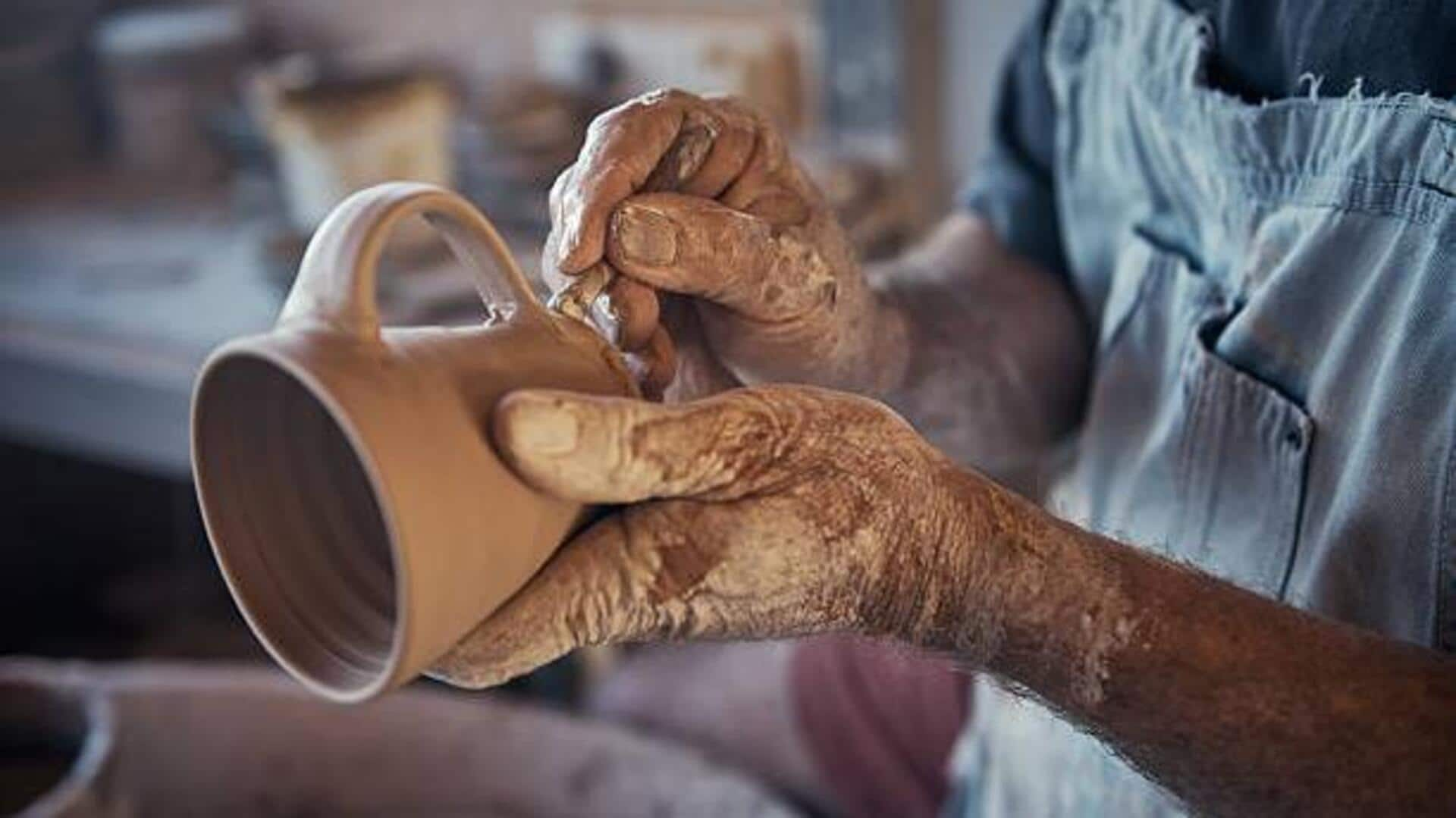
Pottery textures: How artisans create unique designs
What's the story
African pottery art has been practiced for centuries and is known for its unique textures. These are created using techniques such as coiling, pinching, and slab building. The textures not only add to the beauty of the piece but also serve functional purposes. Let's explore these methods and the cultural significance and craftsmanship of this ancient art form.
Methods
Techniques for creating texture
African potters use coiling, pinching, and slab building to create texture on pottery. Each technique enables artisans to shape clay into intricate patterns and designs. Coiling means rolling clay into long strands and layering them to build up the walls of a vessel. Pinching means shaping the clay by hand. Slab building is using flat pieces of clay that are joined together.
Materials
Use of natural materials
Natural materials are essential for lending texture to African pottery. Potters often use elements such as sand, stones, or plant fibers in their work. They not only make the pottery tactile but also represent the environment they come from. Using local resources makes sure every piece is one-of-a-kind and rooted in their place of origin.
Symbolism
Cultural significance of textures
Textures in African pottery often carry cultural symbolism and meaning. Patterns may represent tribal affiliations, social status, or spiritual beliefs. For example, certain motifs might be used exclusively by specific communities or during particular ceremonies. Understanding these symbols provides insight into the values and traditions upheld by different African cultures.
Contemporary
Modern interpretations
Today's artists still draw inspiration from traditional African pottery techniques, but also add modern elements into their work. This fusion leads to innovative designs that contemporary audiences find appealing, while also paying homage to age-old practices. By experimenting with new forms and materials, modern potters keep this vibrant art form alive for future generations.